posted by Jaden on April 18, 2017


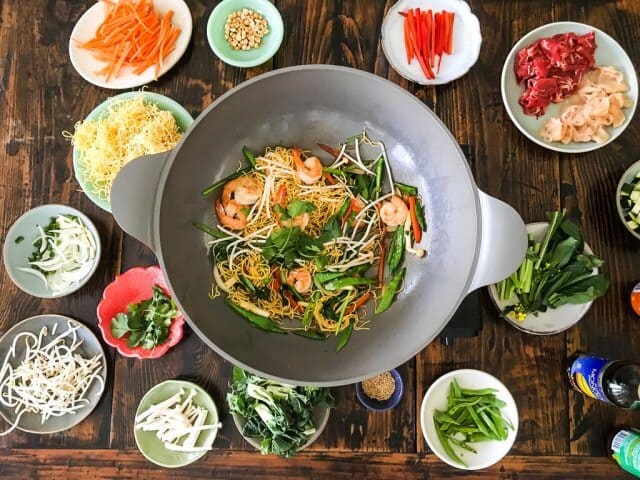
DIY Mongolian barbecue is one of the most fun, interactive meals you can have at home! Each person can choose their ingredients and perform a 5 minute stir-fry at the table for their custom dish. We created this recipe for San-J, using their ready-to use sauces (Mongolian BBQ, Orange, Szechuan, Teriyaki, Thai Peanut, Sweet & Tangy and Asian BBQ) and San-J Tamari.
What is Mongolian BBQ?
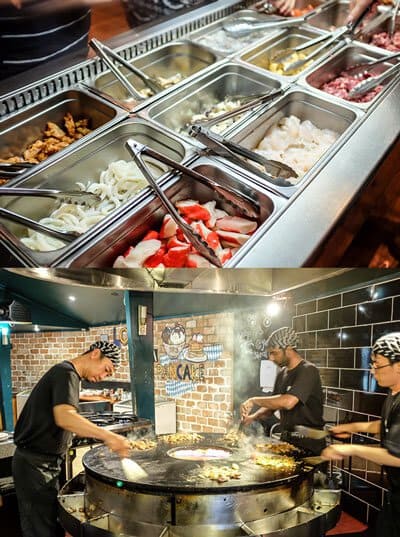
Photo from Ang Sarap – review of The Khan Mongolian BBQ restaurant in New Zealand. Click on photo to see more photos from his feast!
It is neither Mongolian, nor BBQ! Mongolian BBQ was invented by the Taiwanese in 1951, sort of a mash between Japanese Teppanyaki and Chinese Stir-Frying.
Mongolian BBQ is usually presented as all-you-can-eat buffet style, with endless rows of ingredients to build your own custom bowl.
The base of the dish starts with noodles, though you can certainly just skip the starch and go straight for all the other ingredients.
Pile in your bowl as much vegetables, seafood, and meats as you want, choose the type of sauce you want your creation to be cooked in, and the chefs will stir-fry your dish on a large, flat iron griddle and top off the dish with fresh herbs or sesame seeds.
In our Steamy Kitchen house, we love any type of interactive meals, like fondue, raclette, Chinese hot pot, DIY Korean BBQ and of course, Mongolian BBQ. Choosing your own ingredients and cooking at the table is fun for both adults and kids alike.
Mongolian BBQ Table Set-up
 It’s easy! We use a $ 25 portable butane stovetop, which we always have at the house for emergencies, camping, and all of our interactive meals.
It’s easy! We use a $ 25 portable butane stovetop, which we always have at the house for emergencies, camping, and all of our interactive meals.
The brand we own is Gas One, but the brand I recommend is a few dollars more, called Iwatani. The Iwatani is 12,000 BTU, a little more powerful than mine, but it’s just made better and sturdier.

Butane canisters last quite a long time. You’ll only need one to power the entire evening’s worth of cooking, but I recommend keeping a spare or two just in case. A four-pack of butane is about $ 12 on Amazon, which is actually cheaper (half the price) than what I’ve found at Walmart, Home Depot or camping supply stores.
Insert the butane, push down the safety lever to lock the butane in place and fire it up.
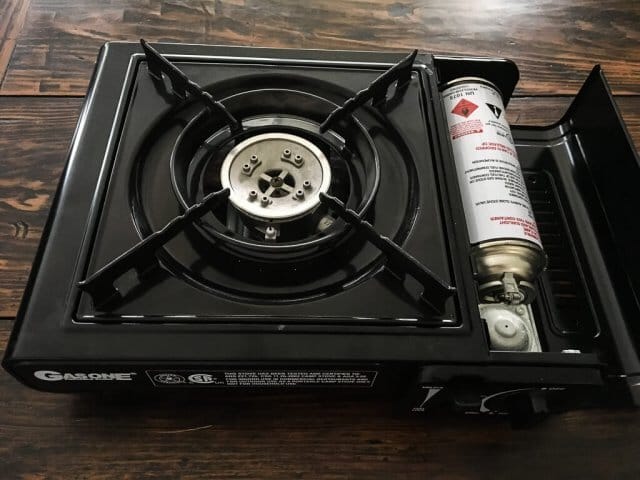
If the butane runs out, the flame will cease. Just unlock the safety lever, replace the butane and lock again.

You’ll also need a wok, a large frying pan or large sauté pan (a frying pan with straight, high sides), a spatula or tongs. I prefer tongs as it makes it easier to grab ingredients and stir-fry tangly noodles. You’ll also lay out all of your ingredients and cooking sauces.

Mongolian BBQ Ingredients
You can use any type of ingredient that you want, but there are some general rules to make DIY Mongolian BBQ easy.
Tips on Vegetables for Mongolia BBQ
Successful stir-frying relies on all the vegetables to finish cooking in minutes and pretty much at the same time. That means thick, tough vegetables, like carrots, need to be cut very thinly, and some vegetables, like cauliflower, need to be par-boiled prior to the stir fry. Also, some vegetables might take a little longer to cook (onion) than others (bean sprouts). I’ll show you how to deal with that in the photos below.
Cabbage: shaved or shredded. I use my large chef’s knife to cut long shreds as thin as possible. I don’t like using the large holes of a box grater – it turns the cabbage mushy and watery, which is bad for a stir-fry.
Carrots: buy pre-cut in julienne strips or use a julienne peeler, my favorite is the $ 10 Oxo tool. Anchor the fat end of the carrot with a fork (don’t try to hold carrot down with your fingers) and swipe across with the julienne peeler.

Bean Sprouts: Just leave whole, you can pinch the tail (root) off if desired. But I’m lazy, so I leave the tail on.
Bell Peppers: Sliced thinly. Here’s what I do. Lop off the top and bottom. (Save this for salad or just for munching)
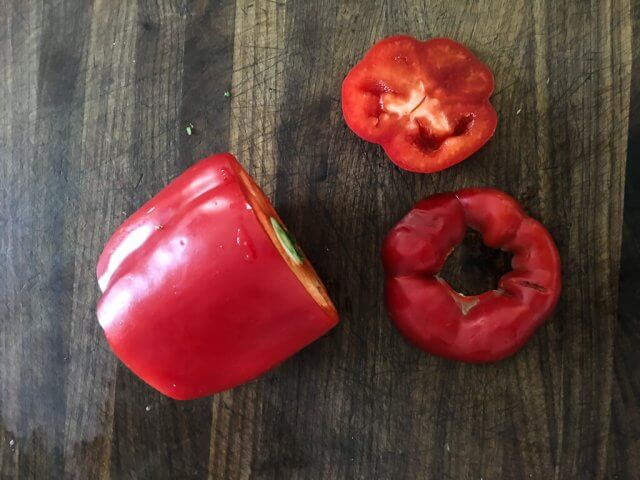
Use knife to remove core and ribs of bell pepper.
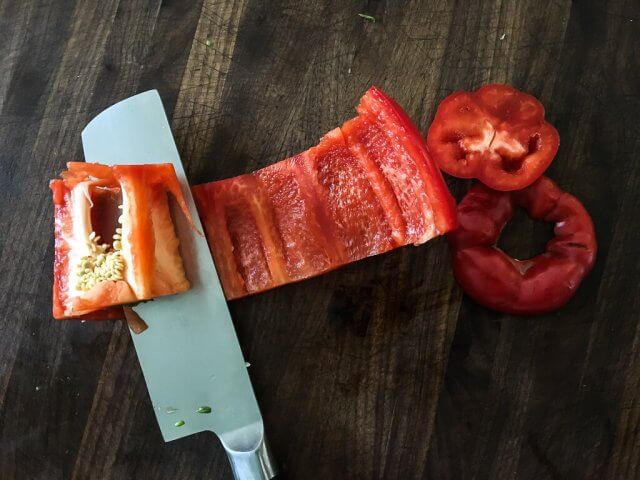
Then slice bell pepper into thin, julienne strips.

Zucchini: Most vegetables in a noodle dish are cut into julienne strips. Generally, for a Chinese stir-fry, the chef tries to cut all ingredients to a similar size and shape. But zucchini is one of those vegetables that do better as a large dice or half-moons. That’s because this vegetable soggy and mushy when over-cooked. These are cut into 1/2″ dice.
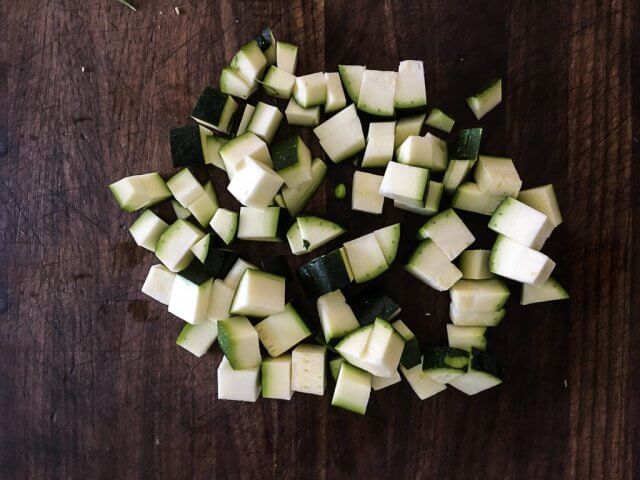
Snow Peas or Sugar Snap Peas: Pinch the stem end and peel off the stringy part. It unzips easily. You can leave snow peas whole, but I prefer to cut peas into long strips diagonally.
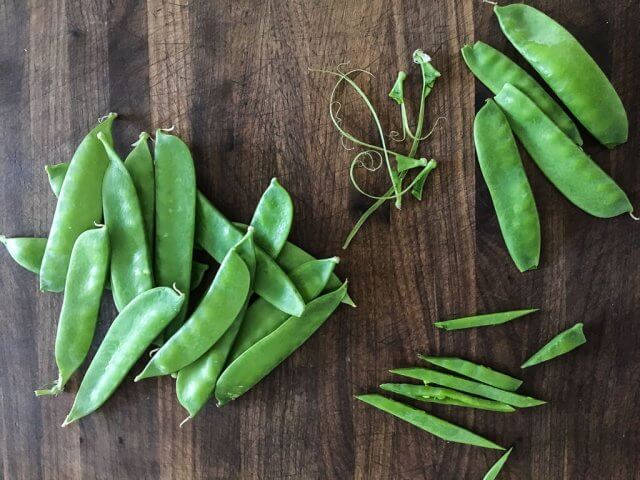
Chinese Greens (Yu-Choy) – One of my favorite leafy green vegetables. Even though it’s part of the mustard family, yu-choy is very tender, sweet and easy to stir-fry. At the store, turn over the bunch and look at the bottoms of the stems. Fresh, young greens will have an almost translucent, milky-white, moist stem. If the stem is dry with a hole in the center, it’s probably old and will be bitter.
For stir-fries, I like to separate stems from the leaves. I’ll add the stems first into the wok, stir fry for a minute, and then add the leaves.
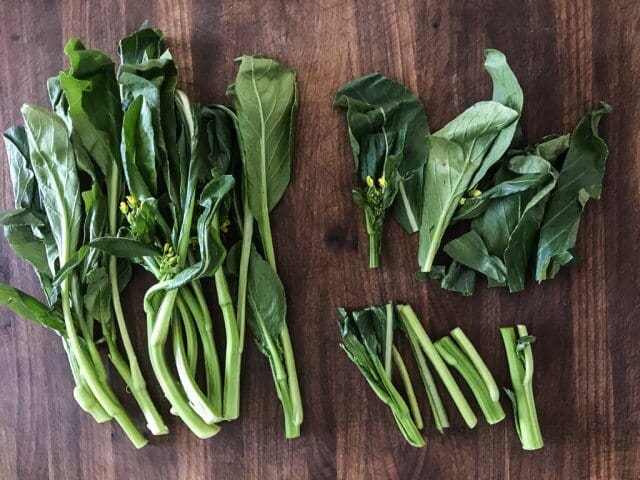
Mushrooms: Straw mushrooms are sold in cans, already cooked, so just cut in half. Slice fresh button mushrooms. I like using Japanese mushrooms -here’s information on different varieties of Japanese mushrooms and links to recipes.

Bok Choy: Separate the leaves of the bok choy, but the leaves are too thick to leave whole, so slice lengthwise. Baby bok choy is better, as it is smaller and more tender. I love stir frying with tatsoi and dwarf bok choy. Since they are so small and tender, Just cut each one in half or quarters like this:
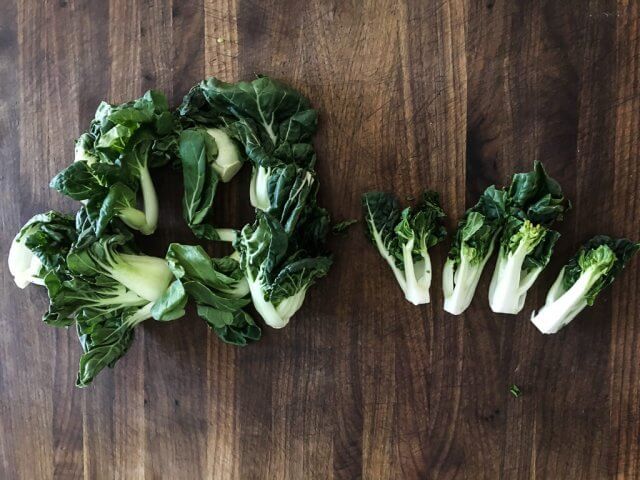
Other Vegetables:
- Tofu: Buy extra-firm, but can be hard to stir fry since it will break apart if not careful. Drain all the water, Place on large plate with several layers of paper towels. On top of tofu block, place another large plate, and then something heavy on top. Let it sit for 20 minutes. This will press out a lot of water from the tofu – making the tofu more firm and easier to stir-fry with.
- Corn: Fresh, canned or frozen. Honestly, I prefer frozen!
- Peas: Fresh or frozen.
- Tomatoes: Large dice, but try to drain liquid and seeds from the tomatoes (save the liquid for your morning smoothie)
- Bamboo Shoots: Canned, cut into julienne or strips
- Baby Corn: Canned, cut into smaller pieces
- Green Beans: Parboil or steam first. Easiest way – boil a cup of water in a small saucepan, add in the beans, cover and let cook for 2 minutes until just about cooked through.
- Broccoli – Parboil or steam partway. Or, you can cut the florets into the finest pieces.
- Spinach – Fresh spinach leaves
Meats & Seafood
Meats: If you go to an Asian market, you’ll likely find already-sliced meats, packaged specifically for Hot Pot, Teppanyaki, Korean BBQ & Mongolian BBQ. These meats are sliced frozen by the butcher on a electric meat slicer. They are so thin, almost shaven, that they’ll cook in seconds.
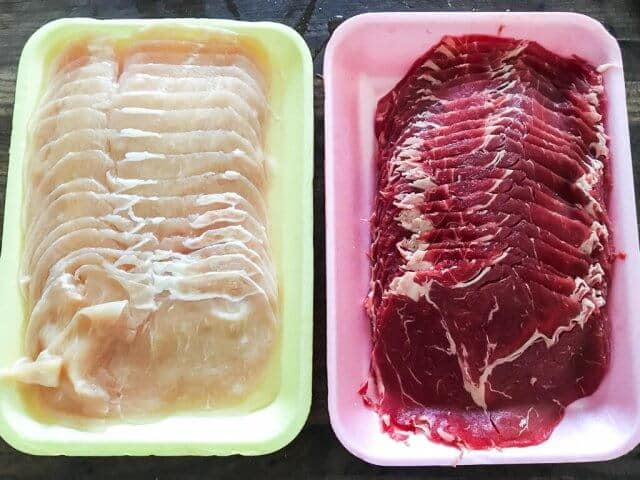
We like using chicken and ribeye.
If you aren’t near an Asian market, head over to the frozen foods section in your regular grocery store. Look for “shaved beef” that’s packaged for Philly Cheesesteak Sandwiches.
If you slice the meats yourself at home, slice thinly, then cut into long, thin strips.
Seafood: Shrimp and bay scallop (the smaller scallop) are great in Mongolian BBQ. It’s a little harder to stir-fry fish, unless it’s firm fish. For all seafood, drain and pat very dry.
Base of Flavor: Aromatics
Onion: Slice onions very thinly.
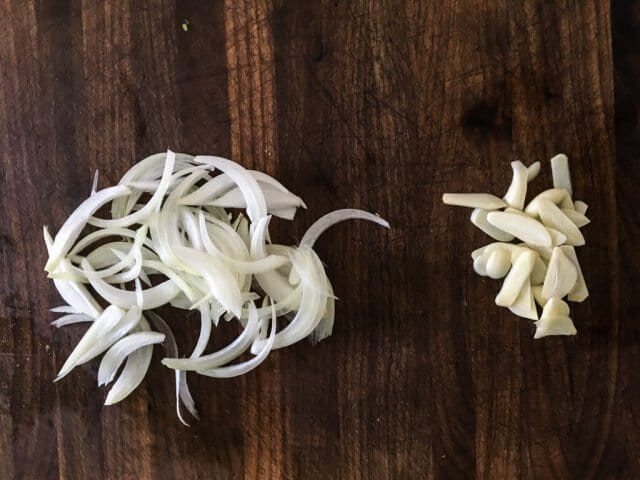
Garlic: I like to slice the garlic thinly as well, especially if you are new to stir-frying. Minced garlic using a garlic crusher makes the garlic too easy to burn. Burnt garlic tastes bitter, so you really have to cook fast and know exactly when to add the garlic. Sliced garlic gives you more leeway.
Green Onion: Cut into 1″ lengths or chopped
Ginger: I love stir-frying with ginger, but, similar to garlic, ginger turns bitter when burnt. Here are some options. First peel the brown ginger skin – just scrape off the skin with a spoon.
- Grate fresh ginger with a rasp grater. You can mix 1/4 teaspoon of grated ginger into your cooking sauce to use later in the stir-fry.
- Use a vegetable peeler and peel very thin slices of fresh ginger. Use chef’s knife to cut into thin julienne strips, then mince as finely as you can.
- For just a little hint of ginger, grate the ginger with rasp grater. Get about 1 teaspoon of grated ginger between your fingers and squeeze the ginger juice into a small bowl. Mix the ginger juice with the cooking sauce to use later in the stir-fry.
Cilantro Stem: You’re probably familiar with using cilantro leaves as a garnish, or chopped to add last minute to a dish, but I like the cilantro stem even more. Mince the stems, and add to the wok the same time you add the garlic, green onion and ginger. This method allows a gentle cilantro flavor throughout the entire dish…not just when you happen to bite into a cilantro leaf in other dishes.
Variety of Toppings
It’s always fun to add crunchy toppings or a sprinkling of fresh herbs. Here are some of our favorites:
- Chopped, roasted, unsalted peanuts
- Sesame seeds
- Crunchy fried noodle
- Almond slivers
- Chopped herbs: cilantro leaves, green onion, Thai basil
Noodles for Mongolian BBQ
You can use any type of noodles that you like, even thin spaghetti pasta if you can’t find Asian noodles. There are healthy, gluten-free options, if that’s important to you! Rice noodles, Korean sweet potato noodles, egg noodles, zucchini noodles, thick Japanese udon noodles, ramen noodles….the list goes on and on.
Boil the noodles according to package instructions, but shave off about 45 seconds from the stated cooking time (the noodles will continue to cook in the wok during the stir-fry, and you don’t want over-cooked, mushy noodles!) After cooking, immediately drain and rinse with cool water to immediately stop the cooking. I like to mix in just a drizzle of Asian sesame oil or regular cooking oil to keep the noodles from sticking and clumping to each other.
Today, we’re using fresh Chinese noodles:

These are found in the Asian market, in the refrigerated section. The noodles are already partly cooked. All that I need to do is add very hot water to heat up the noodles for about 30 seconds.
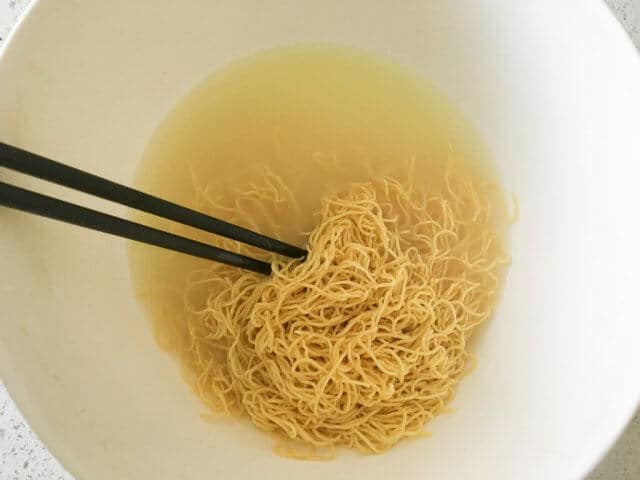
Then drain immediately and mix in a very small drizzle of sesame oil to prevent sticking.
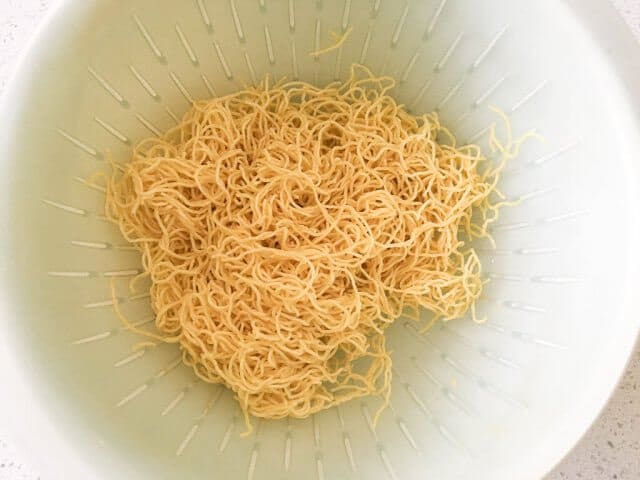
Cooking Sauces
There are so many choices! My client, San-J, has 7 different cooking sauces that are ready-to-use.
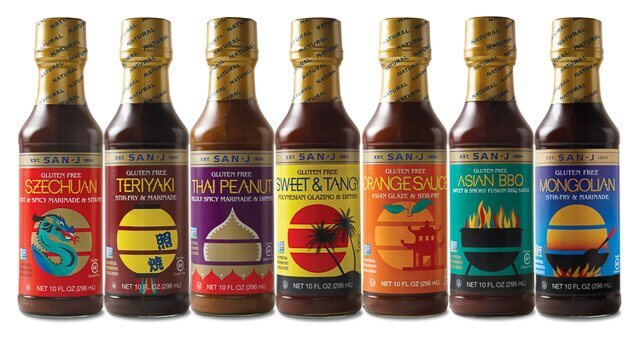
Or you can make your own (this makes enough for 4 noodle stir-fries).
Ginger Sweet Tamari
1/3 cup San-J tamari soy sauce (or good quality soy sauce)
3 tablespoons water
1/2 teaspoon grated fresh ginger
2 tablespoons honey
1 teaspoon Asian sesame oil
1 /2 teaspoon sesame seeds
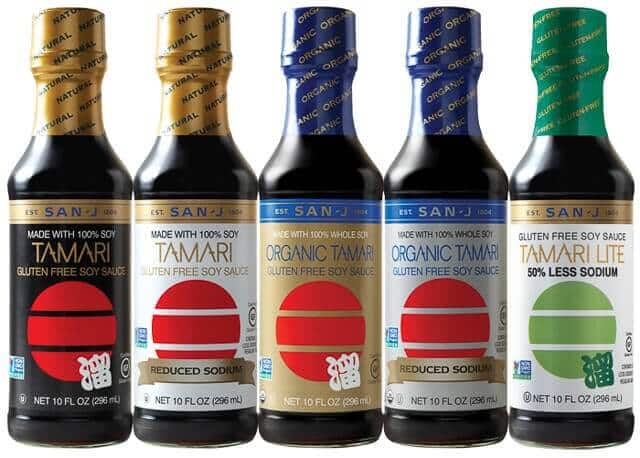 *What is Tamari? Tamari is Japanese soy sauce that is made from 100% soybeans, go through a naturally brewed fermentation process and is the best quality soy sauce that you can use.
*What is Tamari? Tamari is Japanese soy sauce that is made from 100% soybeans, go through a naturally brewed fermentation process and is the best quality soy sauce that you can use.
San-J’s Tamari is made from non-GMO soybeans, vegan, gluten-free and kosher. Read more about Tamari here.

Follow these steps and you’ll get a perfect, light stir-fry, every time. There are a lot of photos, but the entire cooking process is about 7 minutes!
Step 1: Meat or Seafood
The first step in any stir fry starts with the meat or seafood. Proteins are cooked first, until seared and just about halfway cooking through.
Add cooking oil to the wok and let it heat up until very hot, but not smoking. Oil shimmers when it’s the perfect temperature.
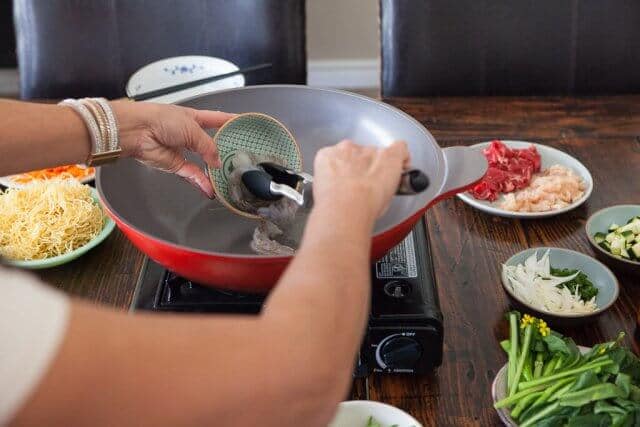
This allows you to get really nice browning on the protein without any other ingredient interfering or vegetables causing too much moisture (which would make the protein boil or steam instead of sear). See how there is plenty of room in the wok to allow each shrimp to cook in the oil?
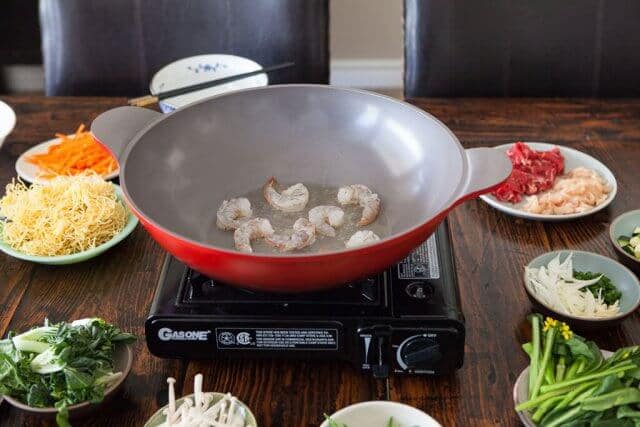
Cook the meat or seafood on one side, then flip to brown the other side.
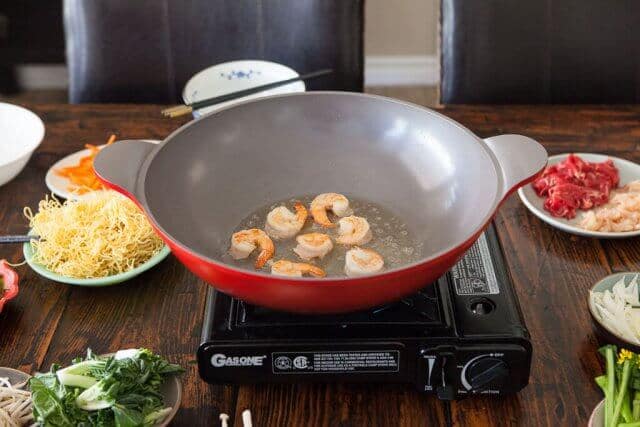
Remove the protein once it’s halfway cooked through. Set aside for now.
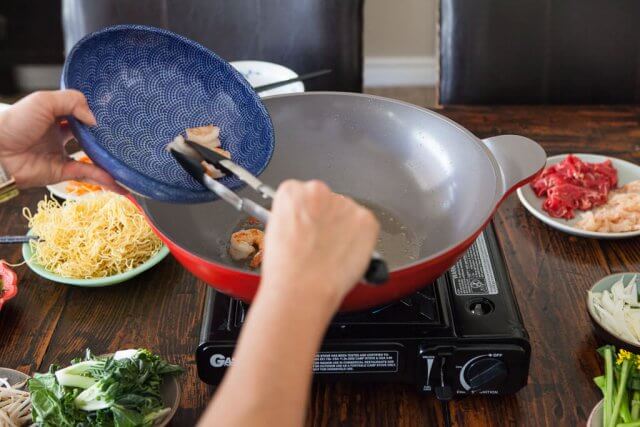
Step 2: Aromatics
There should be oil left in the wok. If not, add in a little more oil and let it heat up until it shimmers again. Add in your desired aromatics. For my dish, I’m adding onion and sliced garlic.
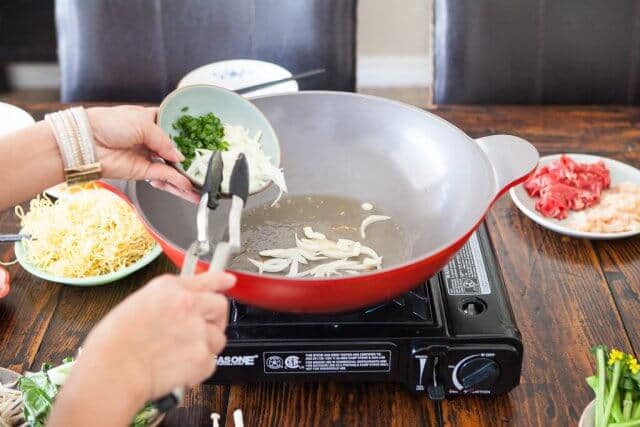
Once it’s fragrant (aromatic!) it’s time for vegetables.
Step 3: Vegetables
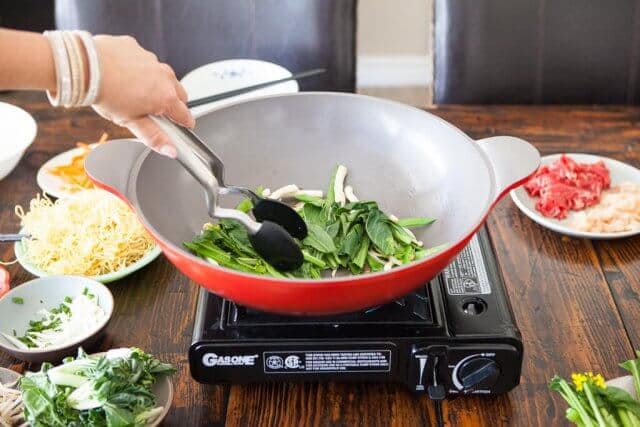
Add vegetables in the order of those taking longest to cook to shortest time.
- Longer to cook: Stems from Chinese leafy greens, bell peppers, carrots
- Shorter time to cook: Soft leafy vegetables, mushrooms, snow peas
Step 4: Noodles
Once the vegetables are nearly cooked through, add in the noodles and about 1 tablespoon of water.

The water will help create a bit of steam, which helps the noodles warm up and finish cooking.
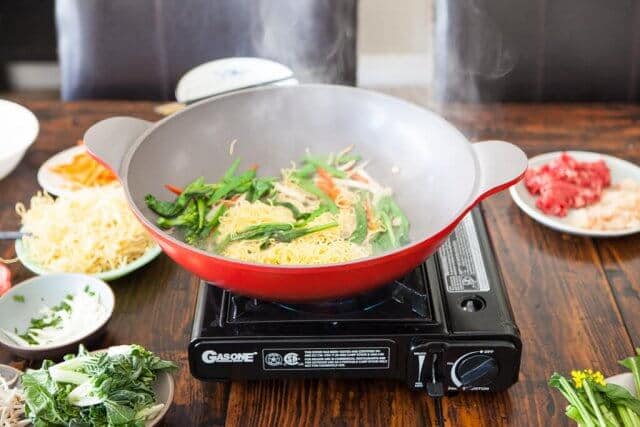
Step 5: Cooking Sauce
Use whatever cooking sauce you like! We’re using San-J Mongolian BBQ Cooking Sauce. Add about 2 tablespoons.
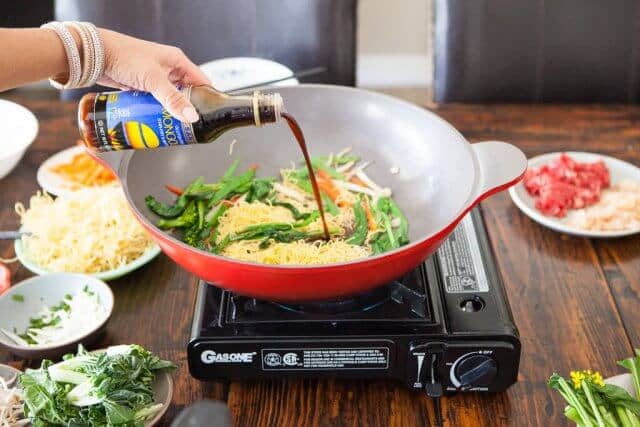
Step 6: Add meat/seafood back in
Now it’s time to add back in the meats or seafood that you’ve seared and cooked about halfway through. It will finish cooking in this step!

I like to add in bean sprouts now. I like bean sprouts crunchy, so I don’t cook them long.
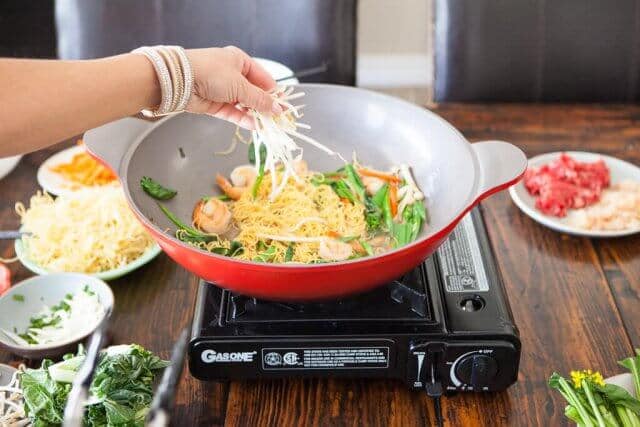
How about some roasted sesame seeds?

Done! Really, it only takes a few minutes to cook this from start to finish. Be sure to wipe down the wok with a paper towel before cooking another batch.
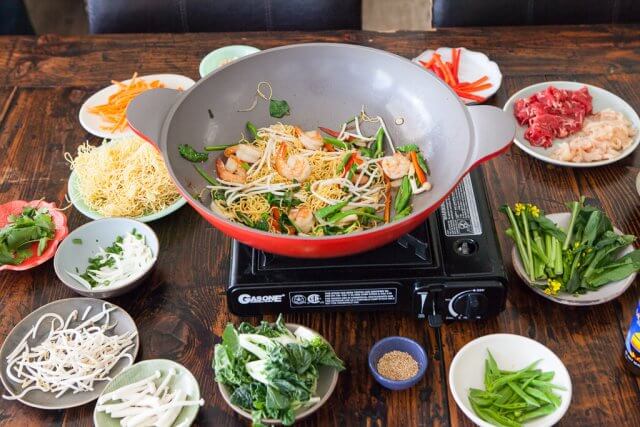
Thank you for supporting Steamy Kitchen!
Even if you don’t buy the product shown below, starting your Amazon shopping here helps our small family business. We get a small commission from Amazon that helps keep this site running free!
Source: http://steamykitchen.com/43914-make-mongolian-bbq-home.html